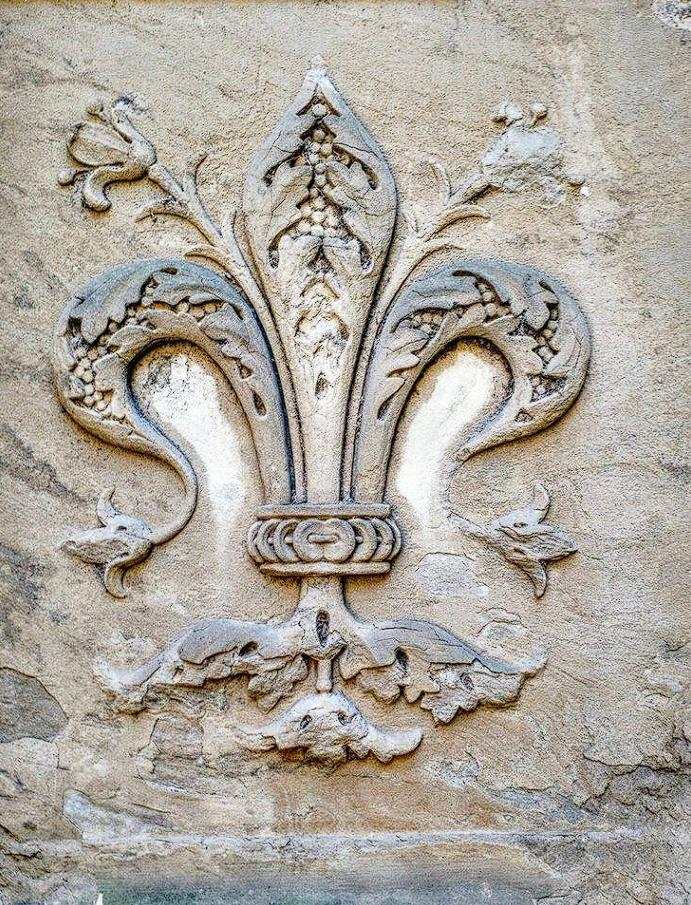“Within the serene confines of the Chiostro degli Avelli at Santa Maria Novella, a delicate yet potent symbol resides: the lily of Florence. This elegant depiction, far more than a mere floral motif, carries the profound weight of a city’s origin and the very essence of its enduring identity.”

The Genesis of Florentia: A City Born of Spring’s Embrace
- Ancient Roots and Floral Origins:
- Florence, or Florentia, traces its origins back to the year 59 BC, a foundation laid in the heart of Roman antiquity. The city’s very name, it is believed, echoes the Ludi Flores, the ancient games held in reverence to the Roman goddess Flora, a celebration of spring’s arrival and the promise of fertility.
- This connection to the natural world, to the blossoming of life and the renewal of the earth, was not a fleeting association. Over time, the lily—or, more accurately, the iris that flourished in the rolling hills of the Chianti countryside—became the enduring emblem of the city, a symbol deeply rooted in the land itself.
- The Friars’ Devotion: Science from Nature’s Bounty:
- The friars of Santa Maria Novella, dwelling within the cloister’s tranquil walls, did not merely admire the lily’s aesthetic beauty. They embarked on a deeper exploration, a scientific inquiry into its very essence.
- From the roots of this wild flower, they meticulously extracted fragrant and healing compounds, laying the cornerstone for what would evolve into one of the world’s oldest pharmacies: the Officina Profumo-Farmaceutica di Santa Maria Novella. This endeavor was not simply an act of botanical study; it was a pioneering step in the fusion of nature’s bounty with scientific knowledge.
- To this day, the historic shop stands as a testament to their legacy, offering visitors the chance to experience centuries-old formulas in the form of perfumes, lotions, and elixirs—fragrances that once graced the courts of Europe, a tangible link to a bygone era.
A Symbol Carved in Stone: The Cloister’s Silent Narrative
- A Legacy Etched in History:
- The lily, meticulously carved into the cloister’s ancient stones, is not merely a decorative motif. It serves as a silent yet powerful reminder of Florence’s ancient past, its profound devotion to the natural world, and the enduring legacy of science and beauty cultivated by the hands of the friars.
- This carving is not just an artistic expression; it is a historical document, a visual narrative of the city’s origins and its enduring connection to the land and the pursuit of knowledge.
- Enduring Cultivation of Beauty and Science:
- The lily, as represented in the cloister, is a symbol that shows the cultivation of beauty and science.
- This cultivation is not simply a historical artifact; it is a living tradition, a testament to the enduring spirit of Florence and its commitment to the harmonious blend of art and science.
Conclusion
“The lily carved within the Chiostro degli Avelli stands as a profound testament to Florence’s enduring spirit. It is a symbol that encapsulates the city’s ancient origins, its deep-rooted connection to nature, and the lasting legacy of scientific and artistic cultivation. This elegant depiction, therefore, is more than just a flower; it is a silent narrative of Florence itself.”

CÁC TIN KHÁC
Mary Walton: The Forgotten Inventor Who Helped Clean Up America’s Cities
Tomb of Queen Nefertari in the Valley of the Queens, Egypt
Discover the Hypostyle Hall of the Temple of Hathor at Dendera
Venus de Losange: Unveiling the Mystery of a 20,000-Year-Old Paleolithic Icon